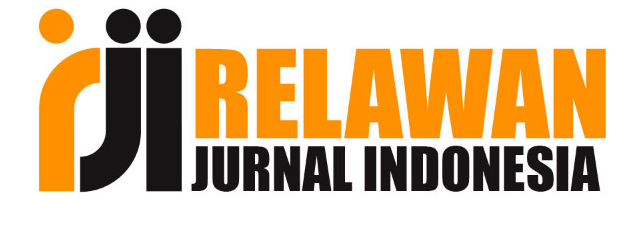STRATEGI VIRAL DI TikTok: PANDUAN PEMASARAN MELALUI MEDIA SOSIAL UNTUK BISNIS
DOI:
https://doi.org/10.36982/jiegmk.v13i1.1742Abstract
TikTok merupakan salah satu media sosial yang layak dipertimbangkan untuk diimplementasikan sebagai alat untuk pemasaran. Di Indonesia spesifiknya, sudah ada lebih dari 22 juta pengguna TikTok. Untuk membantu meningkatkan efektivitas pemasaran melalui TikTok, perlu ada studi empiris tentang faktor-faktor yang memengaruhi interaksi konten pada TikTok. Penelitian ini bertujuan untuk menganalisis pengaruh kompleksitas visual dan tipe konten terhadap interaksi konten (jumlah suka, komentar, dan bagikan) pada TikTok. Total data sebanyak 647 unggahan dikumpulkan dari 7 akun bisnis yang memasarkan produknya pada TikTok untuk konsumen di Indonesia. Pengumpulan data menggunakan metode analisis konten yang dikomputasi menggunakan regresi binomial negatif pada SPSS. Hasil analisis membuktikan bahwa kompleksitas visual tinggi berpengaruh negatif terhadap jumlah bagikan. Variabel Respon ke Komentar berpengaruh positif terhadap jumlah suka; variabel Produk, Respon ke Komentar, dan Review berpengaruh positif terhadap jumlah komentar; variabel Produk dan Review berpengaruh positif terhadap jumlah bagikan. Temuan riset juga menunjukkan bahwa variabel Respon ke Komentar dan Humor berpengaruh negatif terhadap jumlah bagikan. Penelitian ini dapat memperkaya literatur pemasaran media sosial sekaligus menjadi acuan bagi bisnis untuk membuat konten mereka viral di TikTok yang pada akhirnya dapat meningkatkan kinerja bisnis.
References
Alhabash, S., McAlister, A. R., Lou, C., & Hagerstrom, A. (2015). From Clicks to Behaviors: The Mediating Effect of Intentions to Like, Share, and Comment on the Relationship Between Message Evaluations and Offline Behavioral Intentions. Journal of Interactive Advertising, 15(2), 82–96. https://doi.org/10.1080/15252019.2015.1071677
Beukeboom, C. J., Kerkhof, P., & de Vries, M. (2015). Does a Virtual Like Cause Actual Liking? How Following a Brand’s Facebook Updates Enhances Brand Evaluations and Purchase Intention. Journal of Interactive Marketing, 32, 26–36. https://doi.org/10.1016/j.intmar.2015.09.003
Bucknell Bossen, C., & Kottasz, R. (2020). Uses and gratifications sought by pre-adolescent and adolescent TikTok consumers. Young Consumers, 21(4), 463–478. https://doi.org/https://doi.org/10.1108/YC-07-2020-1186
Cameron, A. C., & Trivedi, P. K. (2013). Regression analysis of count data (2nd Editio). Cambridge University Press.
Casaló, L., Flavián, C., & GuinalÃu, M. (2007). The impact of participation in virtual brand communities on consumer trust and loyalty: The case of free software. Online Information Review, 31(6), 775–792. https://doi.org/10.1108/14684520710841766
Coelho, R. L. F. O., Denise Santos de Almeida, M. inacio, & De, S. (2016). Does Social Media Matter for Post Typology? Impact of Post Content on Facebook and Instagram Metrics. Online Information Review, 40(4), 458–471.
De Vries, L., Gensler, S., & Leeflang, P. S. H. (2012). Popularity of brand posts on brand fan pages: An investigation of the effects of social media marketing. Journal of Interactive Marketing, 26(2), 83–91. https://doi.org/10.1016/j.intmar.2012.01.003
Deng, L., & Poole, M. S. (2010). Affect in Web Interfaces: A Study of the Impacts of Web Page Visual Complexity and Order. 34(4), 1–10.
Dewa, C. B., & Safitri, L. A. (2021). Pemanfaatan Media Sosial Tiktok Sebagai Media Promosi Industri Kuliner Di Yogyakarta Pada Masa Pandemi Covid-19 (Studi Kasus Akun TikTok Javafoodie). Khasanah Ilmu - Jurnal Pariwisata Dan Budaya, 12(1), 65–71. https://doi.org/10.31294/khi.v12i1.10132
Dolan, R., Conduit, J., Frethey-Bentham, C., Fahy, J., & Goodman, S. (2019). Social Media Engagement Behavior: A Framework for Engaging Customers Through Social Media Content. European Journal of Marketing, 53(10), 2213–2243. https://doi.org/10.1108/EJM-03-2017-0182
Donderi, D. C. (2006). An information theory analysis of visual complexity and dissimilarity. Perception, 35(6), 823–835. https://doi.org/10.1068/p5249
Haenlein, M., Anadol, E., Farnsworth, T., Hugo, H., Hunichen, J., & Welte, D. (2020). Navigating the New Era of Influencer Marketing: How to be Successful on Instagram, TikTok, & Co. California Management Review, 63(1), 5–25. https://doi.org/10.1177/0008125620958166
Hudson, S., Huang, L., Roth, M. S., & Madden, T. J. (2016). The influence of social media interactions on consumer-brand relationships: A three-country study of brand perceptions and marketing behaviors. International Journal of Research in Marketing, 33(1), 27–41. https://doi.org/10.1016/j.ijresmar.2015.06.004
Koivisto, E., & Mattila, P. (2020). Extending the luxury experience to social media – User-Generated Content co-creation in a branded event. Journal of Business Research, 117(November 2017), 570–578. https://doi.org/10.1016/j.jbusres.2018.10.030
Kusumasondjaja, S., & Tjiptono, F. (2019). Endorsement and visual complexity in food advertising on Instagram. Internet Research, 29(4), 659–687. https://doi.org/10.1108/IntR-11-2017-0459
Landis, J. R., & Koch, G. G. (1977). The Measurement of Observer Agreement for Categorical Data. Biometrics, 33(1), 159–174.
Lehmann, J., Lalmas, M., Yom-Tov, E., & Dupret, G. (2012). Models of user engagement (J. Masthoff, B. Mobasher, M. Desmarais, & R. Nkambou (eds.); User model). Springer.
Li, F., Larimo, J., & Leonidou, L. C. (2021). Social media marketing strategy: definition, conceptualization, taxonomy, validation, and future agenda. Journal of the Academy of Marketing Science, 49(1), 51–70. https://doi.org/10.1007/s11747-020-00733-3
Luarn, P., Lin, Y. F., & Chiu, Y. P. (2015). Influence of Facebook brand-page posts on online engagement. Online Information Review, 39(4), 505–519. https://doi.org/10.1108/OIR-01-2015-0029
Moran, G., Muzellec, L., & Johnson, D. (2020). Message Content Features and Social Media Engagement: Evidence From the Media Industry. Journal of Product and Brand Management, 29(5), 533–545. https://doi.org/10.1108/JPBM-09-2018-2014
Muntinga, D. G., Moorman, M., & Smit, E. G. (2011). Introducing COBRAs: Exploring motivations for Brand-Related social media use. International Journal of Advertising, 30(1), 37–41. https://doi.org/10.2501/IJA-30-1-013-046
Pieters, R., Wedel, M., & Batra, R. (2010). The stopping power of advertising: Measures and effects of visual complexity. Journal of Marketing, 74(5), 48–60. https://doi.org/10.1509/jmkg.74.5.48
Pinto, M. B., & Yagnik, A. (2017). Fit for life: A content analysis of fitness tracker brands use of Facebook in social media marketing. Journal of Brand Management, 24(1), 49–67. https://doi.org/10.1057/s41262-016-0014-4
Pletikosa Cvijikj, I., & Michahelles, F. (2013). Online engagement factors on Facebook brand pages. Social Network Analysis and Mining, 3(4), 843–861. https://doi.org/10.1007/s13278-013-0098-8
Saboo, A. R., Kumar, V., & Ramani, G. (2016). Evaluating the impact of social media activities on human brand sales. International Journal of Research in Marketing, 33(3), 524–541. https://doi.org/10.1016/j.ijresmar.2015.02.007
Schau, H. J., Jr, A. M. M., & Arnould, E. J. (2009). Schau How Brand Community Practices Create Value.pdf. 73(September), 30–51.
Schreiner, M., Fischer, T., & Riedl, R. (2019). Impact of Content Characteristics and Emotion on Behavioral Engagement in Social Media: Literature Review and Research Agenda. Electronic Commerce Research, 0123456789. https://doi.org/10.1007/s10660-019-09353-8
Schultz, C. D. (2017). Proposing to Your Fans: Which Brand Post Characteristics Drive Consumer Engagement Activities on Social Media Brand Pages? Electronic Commerce Research and Applications, 26, 23–34. https://doi.org/10.1016/j.elerap.2017.09.005
Shahbaznezhad, H., Dolan, R., & Rashidirad, M. (2021). The Role of Social Media Content Format and Platform in Users’ Engagement Behavior. Journal of Interactive Marketing, 53, 47–65. https://doi.org/10.1016/j.intmar.2020.05.001
Statista. (2021). Number of TikTok users in selected countries in 2020 (in millions). Statista. https://www.statista.com/statistics/1202979/number-of-monthly-active-tiktok-users/
Tafesse, W. (2015). Content strategies and audience response on Facebook brand pages. Marketing Intelligence & Planning, 33(6), 927–943. https://doi.org/10.1108/MIP-07-2014-0135
Taiminen, K., & Karjaluoto, H. (2017). Examining the performance of brand-extended thematic-content: The divergent impact of avid- and skim-reader groups. Computers in Human Behavior, 72, 449–458. https://doi.org/10.1016/j.chb.2017.02.052
Virtanen, H., Björk, P., & Sjöström, E. (2017). Follow for follow: marketing of a start-up company on Instagram. Journal of Small Business and Enterprise Development, 24(3), 468–484. https://doi.org/10.1108/JSBED-12-2016-0202
Voorveld, H. A. M., van Noort, G., Muntinga, D. G., & Bronner, F. (2018). Engagement with Social Media and Social Media Advertising: The Differentiating Role of Platform Type. Journal of Advertising, 47(1), 38–54. https://doi.org/10.1080/00913367.2017.1405754
Wahid, R. M., & Gunarto, M. (2021). Factors Driving Social Media Engagement on Instagram: Evidence from an Emerging Market. Journal of Global Marketing, 0(0), 1–23. https://doi.org/10.1080/08911762.2021.1956665
Downloads
Published
How to Cite
Issue
Section
License
Copyright (c) 2022 Sun Mukti Arya

This work is licensed under a Creative Commons Attribution-ShareAlike 4.0 International License.
Authors retain copyright and grant the journal right of first publication with the work simultaneously licensed under a Creative Commons Attribution License that allows others to share the work with an acknowledgement of the work's authorship and initial publication in this journal.
Â
Authors are permitted and encouraged to post their work online (e.g., in institutional repositories or on their website) prior to and during the submission process, as it can lead to productive exchanges, as well as earlier and greater citation of published work.
Â
LP2M Indo Global Mandiri University has the right to multiply and distribute the article and every author is not allowed to publish the same article that has been published in this journal.










